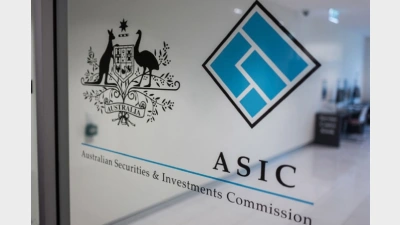Searching for the right asset allocation mix



Superannuation funds are working hard to keep returns in the black, but as Damon Taylor writes, asset allocation remains extremely challenging amid factors such as the Eurozone crisis and broader market volatility.
With investment markets that continue to be inscrutable across any number of asset classes, allocation decisions remain difficult for Australian superannuation funds.
As always, the key is diversification – finding those investments which can deliver equity-like returns without equity-like volatility, and for David Stuart (head of Mercer's Dynamic Asset Allocation team) that search continues to be super funds’ primary focus.
“It’s no surprise, but funds are still trying to diversify away from equities,” he said.
“That’s been going on for a long time, and I think the continued equity market volatility that we’ve seen lately is putting continued pressure on them to try and find assets which may yield equity-like returns, but hopefully won’t move identically to equities.
“The idea is that they don’t go down together, which, of course, was the problem during the global financial crisis [GFC],” Stuart said.
Also identifying the pursuit of diversity as a key goal for funds, Graeme Miller (head of Investment for Towers Watson in Australia) said the search had become a long-term secular trend.
“And I think it’s reasonable to expect that funds will be progressively less reliant on equities going forward,” he said.
“Having said that, I still think that equities will continue to dominate most institutional portfolios, at least for the time being, but that’s because of the capacity issue.
“Equities have got the great advantage of having massive capacity levels and excellent liquidity.”
Interestingly, Stuart said that one area of investment which was generating interest and coming under increasing scrutiny for this very reason was various forms of debt.
“So we’re certainly looking at areas like high yield debt, emerging market debt, private debt,” he said.
“These are all relatively risky debt spaces, with risk levels that are probably closer to those of equities, but they are risks that are clearly a little bit different as well.
“Some of this has been going on for a while though, because I’d expect quite a few funds to have positions in emerging market debt,” Stuart continued.
“With private debt, whether that’s bank loans or mezzanine debt coming out of property or maybe even private equity, those are probably the newer areas where we certainly perceive that there may be some global opportunities – particularly given the state of the banking system around the world.
“Simply put, the banks are reluctant to lend at the same levels as they did in the past in some of these areas,” he said.
Indeed, for Kristian Fok – deputy director of consulting for Frontier Investment Consulting – it is those credit opportunities that represent the most significant emerging trend within superannuation fund asset allocations currently.
“They’re looking at credit on a risk-adjusted basis,” he said. “So it’s obviously going to give the same return outlook as equities or some of the unlisted asset assets like infrastructure and so forth, but it has its own attractive characteristics.
“So it’s that, and also what we would call floating rate debt, where the terms are a margin above cash,” Fok added. “It doesn’t necessarily have the same sensitivity to general interest rate changes.”
Yet for Stuart, whether superannuation funds are reviewing their traditional equities allocations or looking to the non-traditional in credit, the dilemma underlining all super fund asset allocation decisions right now is MySuper.
“That’s the one thing that’s hanging over the whole industry at the moment,” he said.
“There’s been a fairly high degree of uncertainty as to what the ultimate picture will look like, and still some uncertainty as to how important fees are going to be in the new environment.
“It’s probably been a bit of a distraction for a lot of superannuation funds,” Stuart continued. “They’ve been a bit wary of pursuing investments which carry high fees with them.
“So when it comes to some of these newer, non-traditional investment choices like private debt spaces, they do require a lot of due diligence analysis, and inevitably, they do tend to carry high fees,” he said.
Of course, super funds’ desire for diversification in their allocations is nothing new. Alternative investments have gained increasing popularity in recent years for this very reason.
Yet according to Miller, where allocations may previously have followed a standard formula, funds are now looking for a more tailored approach to alternatives.
“In making all investment decisions, but in alternatives in particular, funds are increasingly seeking to segregate their membership into different cohorts and different members with different needs,” he said.
“And the biggest segmentation that’s taking place at the moment – and it’s also a very sensible one – is the differential between those members who are still working and accumulating super benefits and those members who are in retirement or who are no longer accumulating.
“So we’re seeing a lot of interest in post-retirement benefits, a lot of interest in focusing on dampening the volatility on returns from year-to-year, and trying to allow those options to generate more stable income streams,” Miller continued.
“Some funds are even taking that a bit further and seeking to segment their existing members into different cohorts based on their age or their investment type or their account balance, or the rate of contributions that they’re paying into the fund, and those sorts of things.
“The goal here is tuning their allocations to what is most appropriate for their membership,” he said.
Seeing similar efforts amongst Mercer’s own clients, Stuart said that an increased focus on tailoring allocations to member demographics was an altogether different consequence of funds’ preparation for MySuper.
“One of the other things that has come out of MySuper is that trustees should be more cognisant of their membership characteristics in their investment policies,” he said.
“So at the margin, those funds with older demographics may be a little more concerned about having too high a proportion of illiquid assets that could potentially be a constraint,” Stuart said.
Not surprisingly, the fundamental reasoning behind segmenting fund membership with respect to asset allocation is related to liquidity, and for Fok, such constraints are likely to be fund executives’ first consideration.
“When it comes to super funds’ alternative investment allocations, the first high level constraint is their liquidity requirements,” he said.
“And I think when you’ve got an uncertain environment, you’ve got to be mindful of member switching.
“Similarly, if you’re an established fund with members who are approaching retirement, that’s also a very important consideration,” Fok continued.
“The next thing would be the value for money equation, and that relates back funds’ focus on the fees that they’re paying and whether they’re getting value for those fees.
“Inevitably, there are certain asset classes that are probably more scalable and not as expensive in the alternative space,” he said.
Fok said that private equity was a good example of such reasoning.
“So what we’re seeing is a trend from generic private equity programs – for instance, to more targeted programs where the investment opportunity is quite compelling,” he said.
“And even if it’s a more generalist program, funds are rethinking the way that they access that.
“So rather than just going fund-of-funds, they’re looking at setting up individual mandates, thinking about co-investments and other means of reducing the cost,” Fok said.
For Miller, the main factor working against alternative investments would always be liquidity, and so it had to be a prime consideration.
“It is absolutely the case that super funds should expect to get a significant reward for taking on a liquidity risk,” he said. “Otherwise, they shouldn’t invest there – it’s that simple.
“It would also be fair to say that the size of reward that members demand in that area has been increasing because of the lessons learned during the GFC [global financial crisis],” Miller continued. “And the second thing, of course, about alternatives is the fees.
“Once again, and particularly with MySuper on the horizon, many of the traditional fee structures and fee levels in alternative assets are no longer palatable for super funds,” he said.
But while more granular member segmentation may hold particular sway when it comes to the selection of alternative investments, the more significant use for such moves is in the post-retirement space.
With Stronger Super and the legislative changes inherent in it, the industry clearly has its hands full, and yet post-retirement is acknowledged to be the industry’s next area of focus. The natural assumption is that funds’ asset allocation must change to reflect that focus, but for Stuart, the hurdle remains scale.
“The problem with post-retirement has always been scale,” he said. “While funds were relatively immature, the proportion of retirees relative to those in an earlier stage of their careers was quite low.
“Therefore, in terms of the order of priorities, the priority was to try and improve the investment strategy for the vast majority of your members who were firmly in the accumulation phase,” Stuart continued.
“That said, compulsory super’s been around 20-odd years now and these schemes are now maturing, and there is an increasing proportion of members retiring.
“But the reality is still that funds need to get to a certain scale of post-retirement members in order to actually construct differentiated options which may be more geared towards capital preservation, income and liquidity – towards the requirements of retirees.”
Illustrating an approach to post-retirement that went well beyond asset allocation, Fok said that Frontier Investment Consulting favoured a solution-based approach.
“So what we’ve done through exercises with our clients is look at how best they can provide the solution,” he said.
“And what is quite clear is that what may be appropriate for one client isn’t necessarily going to be appropriate for another – it all depends on the age profile of their membership, how actively engaged they are, the administration systems they have in place, and so on.
“So what we do is go through a range of different options between the very simplest – which is to just replicate the existing options where you’ve got appropriately targeted risk profiles that members can then choose – to having a more active approach of trying to identify what’s the most appropriate risk profile for members,” Fok outlined.
“That may change over time, depending on their balances and age and all sorts of things, but we can identify at what point it’s going to be appropriate to have a more active engagement in terms of financial advice or providing them with tools to help make informed decisions.”
On the allocation side, Fok said that the approaches again ranged from the simple to the complex.
“We can do simple things like change the asset allocation, we can be a lot more targeted about the sorts of managers that we put in place, use particular types of investments for their tax status and income focus and so on,” he said.
“But you can also get different fund managers who have a lower volatility focus.
“There are lots of different things you can do, but it’s about how much the fund wants to leverage off the existing investment base and how much they want to tailor it,” Fok added.
“This is a space where there’s a great deal of potential, but it’s dependent on what degree of focus funds want to place on post-retirement side and what sort of ancillary services they already have in place.”
But while it would seem the Australian superannuation industry’s focus on post-retirement is still in its infancy, Miller was also quick to point out that such changes tended to be evolutionary rather than revolutionary.
“These things always occur in stages, but even so early in the piece, there have been some quite material changes already,” he said.
“Perhaps the best example of it is the fact that many funds are now offering their members direct term deposits.
“So that’s something that wasn’t in investment options previously, but even more generally, if you look at the fixed interest component of most super funds today and compared that to the fixed interest components of those same funds even three or four years ago, you’ll actually see that they look structurally very, very different,” Miller continued.
“Investors are far less prepared to just invest in the traditional fixed interest benchmarks and accept the sovereign risk and the concentration risk that those represent.
“This sort of change has almost necessarily been incremental, but I wouldn’t trivialise it,” he said.
So as Australian super funds continue to balance legislative change on the one hand and an unpredictable investment environment on the other, it is apparent that they must be both careful and deliberate with their asset allocation.
And for better or worse, Stuart said that the allocation and investment pitfalls were obvious.
“From our perspective, and in terms of dynamic asset allocation advice, we would be saying that the world’s a very risky place right now,” he said.
“Clearly, now is not the time to be placing big bets or to be moving a long way away from your strategic asset allocation.
“We just don’t think the outcomes are particularly predictable at this juncture,” Stuart said.
Taking a medium term view, Stuart said that fund executives would be well served being careful of bond yields at this level as well.
“You probably need to be reducing exposure to that area over time,” he said. “Similarly, equities look relatively cheap against bonds, but there’s significant volatility to be taken into account as well.
“What we’re suggesting is that people hedge risks with a long risk and a short risk position within their portfolios,” Stuart continued.
“And with the short risk position, we’re still wary of the Australian dollar, which looks at a very high level.
“So if you sum all of that up, I guess the opportunity would be to get some more assets overseas and to be a bit wary of chasing government bonds yields too low.”
For his part, Miller said that Towers Watson’s central case continued to be one of a “patchy, bumpy and slow” road to recovery.
“Within our framework there are a number of quite adverse scenarios that have relatively low likelihoods of occurring, but our most likely scenario is that markets continue to be very volatile,” he said.
“That said, we do expect the world to ultimately return to growth and that the very extreme calamities out there will be avoided.
“So what does that mean? It means that, broadly speaking, we’re advising our clients to stick to their long-term strategic allocations,” Miller added.
“But more importantly, we’re continuing to work very closely with our clients to help them achieve diversity.
“Our constant focus is helping them build portfolios that are likely to be robust against whatever scenario presents itself.”
Recommended for you
Ethical super fund Australian Ethical has announced the appointment of Anthony Lane as chief operating officer.
The structural shift towards active ETFs will reshape the asset management industry, according to McKinsey, and financial advisers will be a key group for managers to focus their distribution.
ASIC has warned that practices across the $200 billion private credit market are inconsistent and, in some cases, require serious improvement.
A surge in electricity prices has driven the monthly Consumer Price Index to its highest level in a year, exceeding forecasts.










